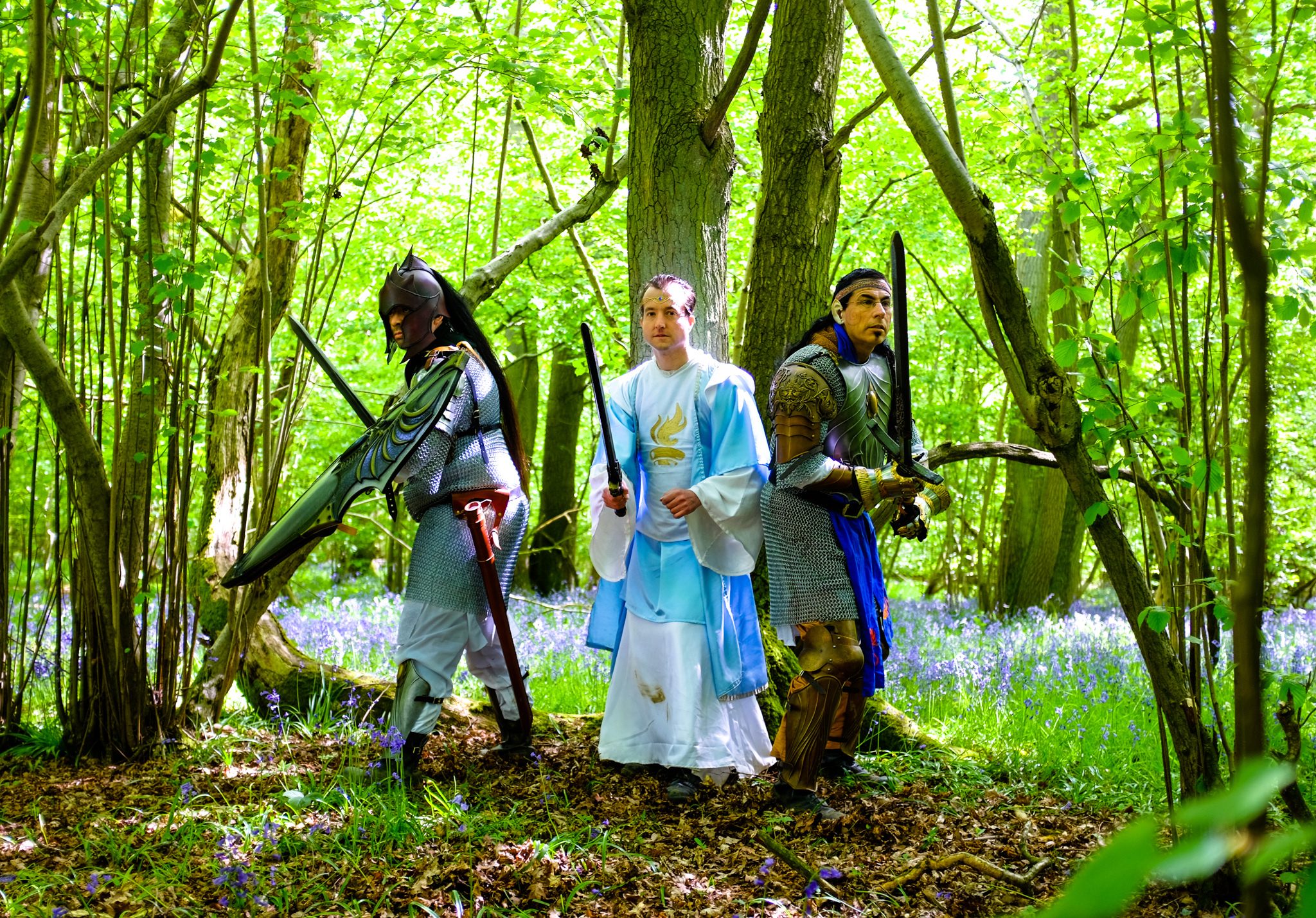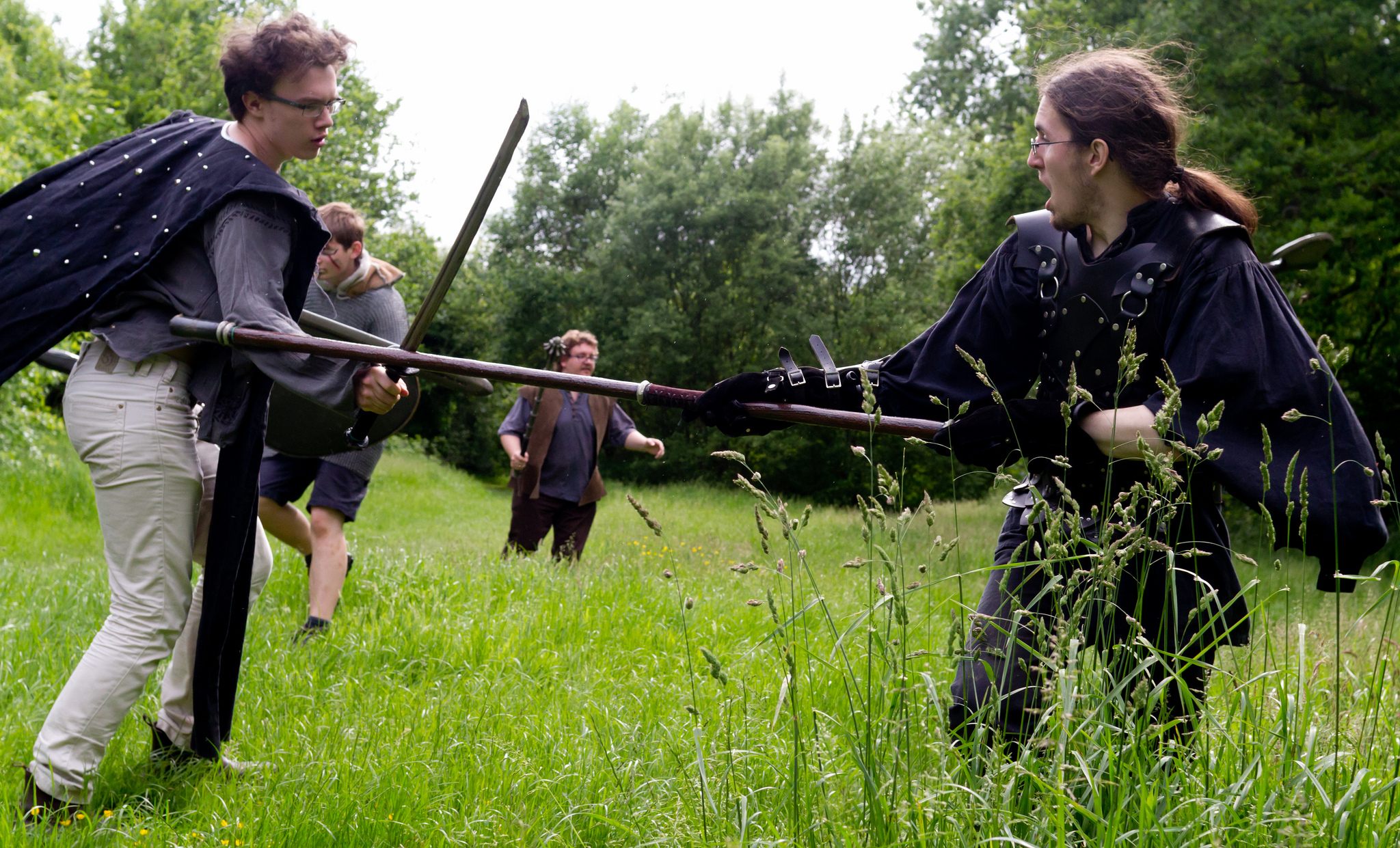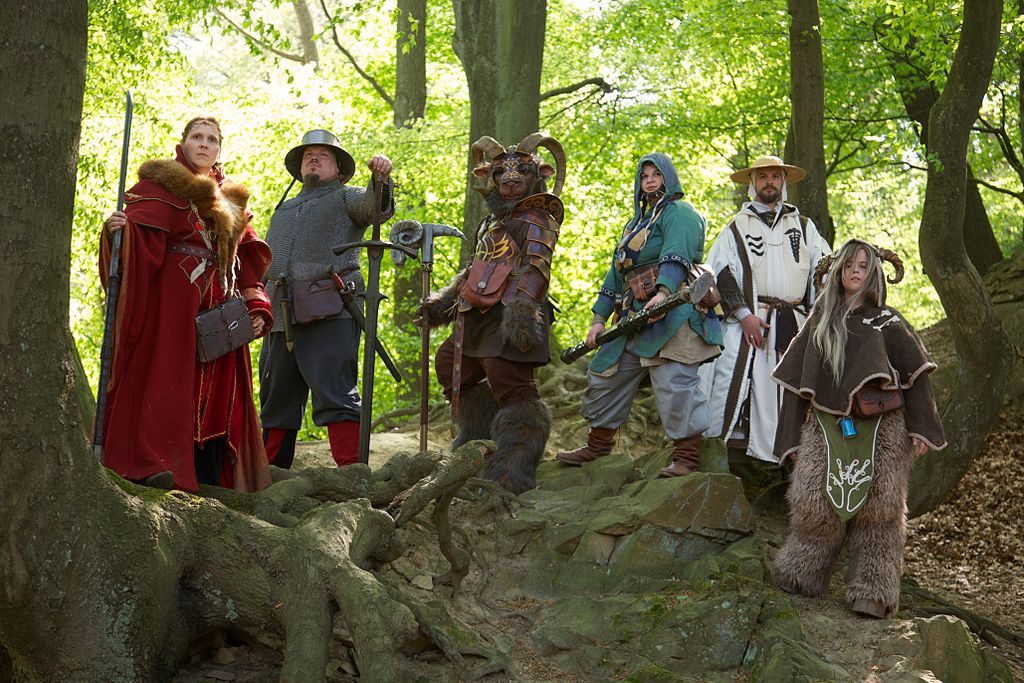Wizards, Warriors, and the Quest for LARP Insurance
Liability policies are making adventuring safer and helping players defeat red tape.

LARPers. Fully insured. (Photo: Tom Garnett/CC BY 2.0)
“It’s dangerous to go alone!” - Old Man, The Legend of Zelda
“You’re in good hands” – Slogan, Allstate Life Insurance Company
Questing is treacherous business, and no one knows more acutely than the heroes and villains taking part in fantasy live action role playing (LARP) events. Luckily for their fictional personas, there are healing spells and potions in case of injury. But should their real-world selves get hurt during the game, these miracle salves have no effect. Fortunately, the real world has LARP insurance.
Fantasy LARPing has been around since the 1970s. It grew out of the popularity of tabletop games of Dungeons & Dragons, when players began looking to add a deeper level of realism and experience to their adventures. Since then, LARPing has slowly grown in popularity and complexity. Now there are countless games and organizations in America alone, bringing to life worlds of fantasy, horror, and war, in which players risk fictional life with their real limbs.
No matter what system they’re a part of, players will generally decamp to a campground or a rented field, and exit our world for theirs—if only for a weekend at a time. With these increased numbers comes increased liability, and that’s where the insurance companies come in.
“Generally you have two plans. You have to have a liability plan, and then you have to have a health/accident plan,” says Joseph Valenti, owner and ruler of NERO LARP, the most extensive LARPing organization in the U.S.

Careful there, warriors. (Photo: jeager/CC BY 2.0)
With around 50 chapters spread across the country, NERO LARPs host hundreds of simulated battles and adventures each year. Players equip themselves with custom-made foam weaponry (called “boffers”), and wade into (untrained) fantasy combat, creating what seems like a potential litigation nightmare.
“If you have a liability plan, you’re really covering burning down one of the cabins or the main kitchen hall/tavern,” says Valenti. Accident insurance covers any medical costs that might arise from a warrior breaking their ankle, or a ranger falling down. It also makes sure the organizers have representation in case they get sued over such mishaps.
“Most LARPing injuries occur during reenactments of battles,” states the website of Westpoint Insurance, which offers a LARP-specific insurance policy. Valenti doesn’t seem to agree. Even with warlocks firing off spells (“We throw spell packets, which are pieces of cloth with bird seed in them, wrapped with a rubber band. About the size of a film canister.”) at orcs, and barbarians working to cleave their enemies in twain (tapping them with boffers), he says that combat is rarely the source of accidents or injury at a LARP. While each LARP system uses its own rules for combat, most have the safety of the players foremost in mind.
Some LARPs use full-contact, heavy touch combat, but NERO’s system encourages light weapon touches that work with a point system to calculate damage. According to Valenti, accidents and injuries during these LARPs are pretty rare. “We don’t have many accidents at NERO at all,” he says. “We’ll run 200 events this year and we’ll have maybe one or two accidents … We’re typically rated better than a Boy Scout little league baseball group, because they have more accidents than we do.”

Won’t someone protect these adventurers? (Photo: RalfHuels/CC BY-SA 4.0)
This is not to say that accidents don’t happen. But when they do, they’re usually pretty mundane in contrast to the high fantasy trappings of the events. Valenti recalls Baron Wolf of the Land of Tyrangel, a NERO LARPer in Atlanta, slipping on wet leaves, landing on his arm, and breaking it. In another instance, a player in Connecticut was running down a hill, slipped, and broke his wrist. In both cases, the LARPs were insured.
Generally LARP events have had to be covered by general event insurance contracts, but now that LARPing is a more common practice, some insurance companies, like Westpoint above, have taken to offering policies specifically catering to the game. Most of the policies offered by these companies are a cleverly marketed variation of sports insurance that takes care of equipment—the venue’s stuff—and injury.
Even though the insurance is easier to get, it is still rarely implemented. Anthony Insurance Services, which has offered a LARP insurance program since 2011, said that the company is yet to receive a claim on one of its LARP policies. “I think that because of the rules and guidelines the LARP groups implement, they are proactive in their risk management, which in turn is shown through the little to no loss history (claim history),” an Anthony rep wrote us.
But this coverage wasn’t always so easy to obtain. “There was a time when no one would insure me,” says Valenti. “[Insurance agents] were like, ‘What do you guys do exactly? You hit each other with what?’” Fortunately, the fates have changed, LARP insurance is now fairly easily obtained, and no one has to shell out too much gold should their IRL hit points drop.
Liability insurance seems like it could suck the fantasy out of just about any LARP, but conversely, now that it is easier to get, it may actually be helping make LARPing more appealing. “No one who wants to run a [LARP] wants to bother themselves with getting insurance,” says Valenti. Now that such policies can be obtained online, ”it’s a lot easier for someone who’s a geek without a lot of business orientation, but has a lot of storyline desires. He can do it with a minimal amount of challenge.” No other form of insurance has inspired so much magic.







Follow us on Twitter to get the latest on the world's hidden wonders.
Like us on Facebook to get the latest on the world's hidden wonders.
Follow us on Twitter Like us on Facebook